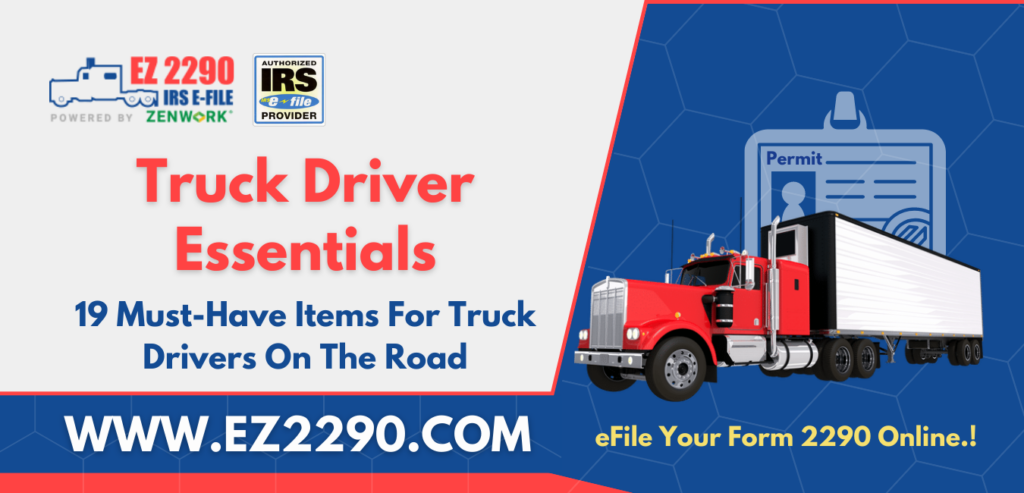

Discover the ultimate guide for truck drivers to conquer sleep deprivation. Unearth the science behind optimal rest, ingenious tips for transforming your cab into a sleep haven, and expert strategies for taming your internal clock. Join the ranks of well-rested road warriors and experience the difference a good night’s sleep can make in your driving journey!
On the vast highways that stretch endlessly before us, a dedicated group of modern-day adventurers embarks on a vital mission—the fearless truck drivers, the true lifeline of our nation’s economy. These road warriors brave long hours and unpredictable challenges to keep goods flowing across the country. However, amidst the demanding schedules and arduous miles, a crucial aspect often falls by the wayside: sleep.
Welcome to “The Well-Rested Road Warrior: A Truck Driver’s Guide to Getting Enough Sleep.” In this blog, we cut straight to the chase, providing practical solutions and essential tips to help truck drivers achieve better sleep. We understand the significance of well-rested drivers and their impact on road safety and personal well-being.
Unique Challenges for Truck Drivers
The nature of trucking and its impact on sleep patterns
Truck driving is not just a job; it’s a lifestyle that often involves irregular schedules and long hours on the road. Drivers may face ever-changing sleep patterns due to shifts extending well into the night or starting early in the morning. Adapting to these irregular sleep patterns can be challenging and may lead to sleep deprivation and fatigue.
Dealing with long hours, tight deadlines, and demanding schedules
Truck drivers are constantly pressured to meet tight delivery deadlines and cover long distances. As a result, they might sacrifice sleep to keep up with demanding schedules. Extended periods of wakefulness can impair their ability to stay alert and attentive while driving, leading to an increased risk of accidents.
Common misconceptions about sleep on the road
Truck drivers often face misconceptions and myths about sleep while on the road. Some may believe that short naps are sufficient to combat fatigue or that coffee and energy drinks can effectively substitute for proper rest. However, these practices only provide temporary relief and do not address the underlying sleep deprivation that can seriously affect their health and safety.
Understanding these unique challenges allows us to develop effective strategies and support systems to help truck drivers prioritize their sleep and well-being. By addressing these issues head-on, we can promote safer driving practices and ensure that our road warriors can tackle their journeys with the sharpness and focus required to navigate our highways responsibly.
How to Get Enough Sleep as a Truck Driver
Getting enough sleep as a truck driver is crucial for your safety, well-being, and overall performance on the road. However, the demanding nature of the job and irregular schedules can make it challenging to prioritize rest. To help you achieve better sleep and stay sharp behind the wheel, here are some essential tips:
Establish a Consistent Sleep Routine
A regular sleep schedule helps regulate your body’s internal clock, known as the circadian rhythm. Going to bed and waking up at the same time every day trains your body to anticipate sleep, improving sleep quality and making it easier to fall asleep.
Create a Comfortable Sleep Environment
Your truck cab becomes your home away from home. Investing in a comfortable mattress and quality bedding ensures a cozy and inviting sleep space. Using blackout curtains and noise-canceling earplugs helps block out external disturbances, creating a more peaceful environment for rest.
Limit Stimulants and Heavy Meals
Caffeine and nicotine are stimulants that can disrupt sleep by increasing alertness. Avoiding them close to bedtime gives your body time to wind down. Heavy or spicy meals can cause discomfort and indigestion, leading to difficulty falling asleep or waking up at night.
Strategically Plan Naps
Short naps can provide a quick energy boost and improve alertness during breaks. However, long naps may lead to sleep inertia, leaving you groggy and less attentive upon waking. Strategic naps help you recharge without interfering with your regular nighttime sleep.
Prioritize Physical Activity
Regular exercise has multiple benefits, including promoting better sleep. Physical activity helps reduce stress and tension, making relaxing and falling asleep easier when you hit the bunk.
Manage Stress and Anxiety
Long hours on the road can be mentally taxing. Practicing relaxation techniques like deep breathing or mindfulness meditation helps lower stress levels, which, in turn, contributes to more restful sleep.
Limit Screen Time Before Bed
The blue light emitted by electronic devices, such as smartphones and tablets, can suppress the sleep hormone melatonin, disrupting your sleep-wake cycle. Avoiding screens before bedtime allows your body to wind down naturally for better sleep.
Utilize Natural Light
Exposure to natural light during the day helps regulate your internal clock. Spending time outdoors during breaks exposes you to daylight, reinforcing your body’s natural sleep-wake rhythm.
Stay Hydrated
Proper hydration is essential, but minimizing fluid intake closer to bedtime can prevent waking up during the night to use the restroom, reducing sleep disruptions.
Conclusion
Embrace a consistent sleep routine and create a comfortable rest space to reclaim your well-deserved rest. Prioritize your well-being by managing stress, limiting stimulants, and engaging in physical activity.
Remember, the path to better sleep lies in your hands. Empower yourself with the knowledge and tools this guide shares to make positive changes that will enhance your safety and overall health and performance.
 1-877-811-ETAX
1-877-811-ETAX









